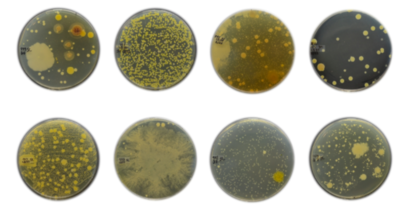User:Andreagomez-patron2020
The Armpit
Overview
By Andie Gomez-Patron
Armpits are a pretty well known location for most people. However, did you know that you have a whole community or microorganisms living in those pits? Armpits have similar communities to other moist areas of the human body, but with one special microbe, Staphylococcaceae, that causes a pungent odor to be released. Below we will describe why this is and how microbes interact with our armpits.
Detailed Environmental Description
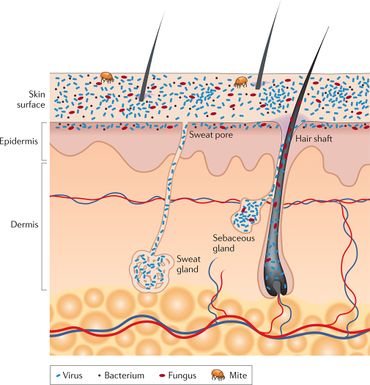
Physically, this environment is located under the arms of human beings. It is composed of human skin and provides a damp and humid environment, shielded from the sun for the majority of the time. Geochemically, this is independent of any earthly environments so it is not affected by soil or water but instead dictated by humidity, temperature, and pH. This particular environment can be described as the “moist, warm, dark, and loaded with organic matter” [2] which is great for microorganisms! When looking at pH levels in our armpits, we can see that men report ~5.8 and women ~6.0 [2]. Moreover, the environment is home to prominent hair follicles as well.
When distinguishing the armpit environment from general human skin microbiomes, scientists have distinguished three general environments in the body that populate similar microbes due to their similar environments. The categories are the oily locations, the moist locations, and the dry locations. The armpit falls into the middle category of moist locations which tends to see Corynebacterium.
[3]
This environment is easily accessed and incredibly common, making it a perfect region to be studied. The human skin environmental ecology has been studied at great lengths, in the past and currently by microbiologists and dermatologists alike.
[4]
This research is ongoing and has no shortage of studies focusing on armpit microbial communities. Currently, one study is focusing on understanding how deodorant affects the microbial diversity in armpit populations and they have already created cultures from found microbes and stated their analysis on these cultures. This is showing how chemical changes to the environment can affect the microbial ecology in this region. To the right we see an image of some of the cultures being studied within this environment.
[5]
Moreover, we can see general skin environmental analysis research being done. In the image to the left, we see how the general skin environment invites different microorganisms.
[6]
Overview of Microbial Ecology as it is known
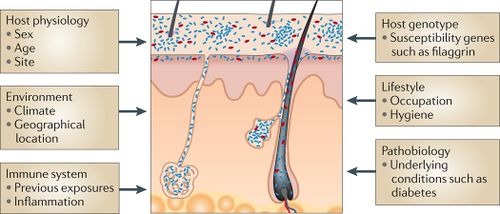
There is a large symbiosis and many commensals as well [4] between human skin and the microbes that inhabit it’s areas. Various parts of the skin house different kinds of microorganisms. On the surface of the skin we see mites inhabiting as well as bacteria and fungi, around the sweat glands we see the capability for virus housing, and around the hair follicles and entryways we see potential for viruses and prevalent fungi. [6]
However, different areas of the human body are more suited for different microbial communities and interact with each other differently. The armpits in particular, have one notable behavior that sets it aside from just any area of the body: sweat! Microbes within the armpit use “the organic sweat gland secretions as food, and as they break down these molecules, volatile odor compounds are released.” [2]
In terms of alpha and beta diversity within this armpit system, we see the alpha diversity as incredibly diverse ranging from fungi, to mites, to bacteria, to viruses, not including the specifics of each that can arise. Therefore, we see an incredible richness of species diversity. In terms of beta diversity, we see that the community abundances can change greatly depending on the different conditions of the armpit such as hygiene, moisture content, odor represents, and more.[5]
Bacteria that produce unwanted odors like the armpit in particular due to the kind of sweat glands in the area, called apocrine glands. "The apocrine glands are mainly responsible for body odor because the sweat they produce is high in protein, which bacteria can break down easily."[7]
This bacteria, eat sweat and produce pungent odors because "The malodorous acids were shown to be covalently linked to a glutamine residue in fresh axilla secretions. Corynebacteria, but not Staphylococci, isolated from the axilla were found to release the acids from these precursors in vitro."[8]
For this change in diversity abundances depending on different conditions, we look to the image on the right.[6]
Expansion topic 1: Implications to Disease/Rashes
Various diseases, infections, and rashes can occur due to the microbes living under our arms. Some of the more prevalent and scary bacterial infections that can occur in the armpits are furuncle, also known as boils. [9] We could also see Erythrasma, which is caused by Corynebacterium minutissimum, a type of bacteria. This presents itself as lesions and scales of various irritated colors.[9]
Moreover, scabies is an infection that can occur in various parts of the human body including the armpits. This forms from mites that live on the skin, specifically scabies mites, which cause a reaction since the skin is not used to the feces and proteins of the scabies mite.
Finally, we can also see fungal infections in the armpit region. One example is ringworm, which is caused by a “family of dermatophyte fungi such as Trichophyton, Microsporum, and Epidermophyton.” [10], and more specifically, Trichophyton rubrum. [11]
Expansion topic 2: Implications to Smell!
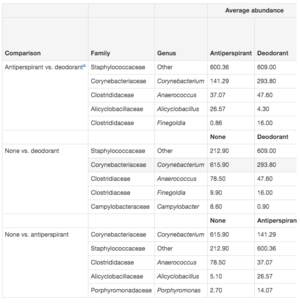
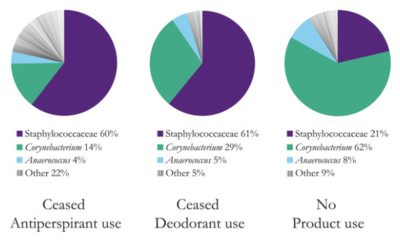
One recent study did a test comparing deodorant user armpits versus all natural armpits and found that those that do not use any kind of odor preventing substance such as antiperspirants or deodorants, have most prevalent Corynebacterium while “individuals who used antiperspirants or deodorants long-term, but who stopped using product for two or more days as part of this study, had armpit communities dominated by Staphylococcaceae.” [5] The presence of Staphylococcus hominis [12] is one of the leading and dominant factors contributing to this particular region’s pungent smell!
This study also shows us that the most prevalent three microbes in the armpit are Staphylococcus, Corynebacterium, Anaerococcus, along with three other microbes that are prevalent in the armpit depending on human hygiene and habit which are Alicyclobacillus, Finegoldia, Campylobacter, Porphyromonas.
INCORPORATE THE IMAGES IN THE PARAGRAPH ABOVE
Expansion topic 3: Armpit Bacteria Transference
Similar to recent studies being done on gut microbe transfers in order to alter weight, there are other scientists researching how to give someone with a more naturally pungent odor in their armpits, naturally less odor without the need for deodorant or antiperspirants.
Key Microbial Players
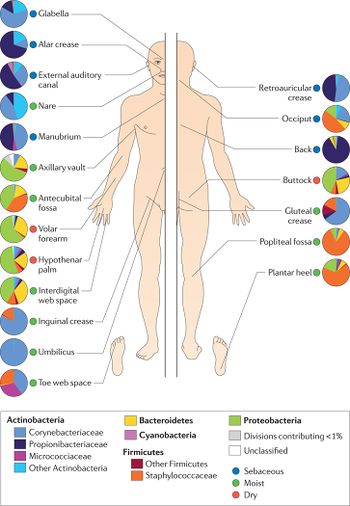
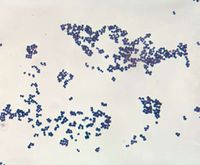
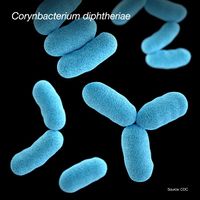

The skin has an incredible array of different microorganisms at play all over the body. Some of the most important microbial players across skin are Staphylococcus, Micrococcus, Corynebacterium, Brevibacterium, Dermabacter, and Malasezzia.[4]
When looking at the microbes in the human armpit, it is important to understand that each area of the human body provides slightly different moistures, exposure to light, pH levels, gland secretion, and other environmental factors. Therefore, while there will be some underlying similarities in some of the communities on the body, that armpit will have its own very specific key microbes. From the image [6], we can see that for the armpit (labeled “Axillary Vault”) in particular, we see a large majority of Proteobacteria, and a smaller collection of Bacteroidetes as well as Corynebacteriaceae. This paper and figure correlate with the data found in the armpit odor test done in the above section.
What is incredible is that within the armpit we find microorganisms that fall into categories all over the tree of life ranging from fungi, to bacteria, to viruses, and to incredibly insects!
Many studies and research over the years have made cultures of these microbes to study them and their roles in this specific region. In summation, we see that arguably, the most important microbial players, Staphylococcus and Corynebacterium, cause BO!
Looking at the three most prominent bacteria present in the armpit we find:
Staphylococcus
- "group of spherical bacteria, the best-known species of which are universally present in great numbers on the mucous membranes and skin of humans and other warm-blooded animals. The term staphylococcus, generally used for all the species, refers to the cells’ habit of aggregating in grapelike clusters. Staphylococci are microbiologically characterized as gram-positive (in young cultures), non-spore-forming, nonmotile, facultative anaerobes (not requiring oxygen)." [13]
Corynebacterium
- "Gram-positive, non-spore-forming, non-lipophilic, catalase-positive, irregular rod-shaped bacterium (M/106/00/5(T)) was isolated"[14]
Anaerococcus
- Anaerococcus prevotii, a "Gram-positive, anaerobic, indole-negative coccus, is a common isolate of the normal flora of skin, the oral cavity and the gut and can also be isolated from human clinical specimens such as vaginal discharges and ovarian, peritoneal, sacral or lung abscesses. This strain PC1, the type strain, was isolated from human plasma in about 1948. Its current classification is under debate, and it has been known under many other names.[15]
"A new anaerobic Anaerococcus sp. A20, that releases 3-hydroxy-3-metyl-hexanoic acid (HMHA, main component of axillary odor) from its glutamyl conjugate, was discovered from axillary isolates."[16]
Conclusion
In summation, we can see that the armpit has a complex assortment of microorganisms that encompasses many different types of life on the phylogenetic tree. It is dominated by proteobacteriaand some bacteroidetes, but can contain viruses, fungi, many bacterium, and even mites. These microbes, specifically the Staphylococcus, interact with the sweat produced within this moist environment to feed themselves and, in turn, secrete a strong odor.
References
- ↑ “Armpit Microbes.” Public Science Lab, 21 Nov. 2016,
- ↑ 2.0 2.1 2.2 Altor, Anne.: “Armpit Ecology!One Earth Body Care.” One Earth Body Care, 5 Aug. 2017.
- ↑ Akst, Jef.: “Microbes of the Skin.” The Scientist Magazine®.
- ↑ 4.0 4.1 4.2 “Microorganisms Found on the Skin.” Microorganisms Found on the Skin | DermNet NZ.
- ↑ 5.0 5.1 5.2 Urban, Julie, et al. “The Effect of Habitual and Experimental Antiperspirant and Deodorant Product Use on the Armpit Microbiome.”
- ↑ 6.0 6.1 6.2 6.3 Grice E.A. and Segre J.A. 2011. The skin microbiome. Nature Reviews Microbiology 9:244–253.
- ↑ “Body Odor: Causes, Prevention, and Treatments.” Medical News Today, MediLexicon International
- ↑ [https://pubmed.ncbi.nlm.nih.gov/18492161/ Natsch, A., et al. “Isolation of a Bacterial Enzyme Releasing Axillary Malodor and Its Use as a Screening Target for Novel Deodorant formulations1.” International Journal of Cosmetic Science, vol. 27, no. 2, 2005, pp. 115–122., doi:10.1111/j.1467-2494.2004.00255.x.]
- ↑ 9.0 9.1 Brannon, Heather L. “9 Bacterial Skin Infections You Should Know About.” Verywell Health, Verywell Health, 25 Feb. 2020
- ↑ Olesen, Jacob. “Ringworm in Armpit: Causes, Symptoms and Treatment of Armpit Fungus.” Make Life Natural, 5 Mar. 2019
- ↑ Society, Microbiology. “Microbes and Disease: Microbes and the Human Body.” Microbes and the Human Body | Microbiology Society
- ↑ Rutsch, Poncie. “Meet The Bacteria That Make A Stink In Your Pits.” NPR, NPR, 31 Mar. 2015
- ↑ The Editors of Encyclopaedia Britannica. “Staphylococcus.” Encyclopædia Britannica, Encyclopædia Britannica, Inc., 20 Nov. 2017.
- ↑ [https://pubmed.ncbi.nlm.nih.gov/15143043/ Collins, Matthew D., et al. “Corynebacterium Caspium Sp. Nov., from a Caspian Seal (Phoca Caspica).” International Journal of Systematic and Evolutionary Microbiology, vol. 54, no. 3, 2004, pp. 925–928., doi:10.1099/ijs.0.02950-0.]
- ↑ “Anaerococcus Prevotii DSM 20548.” BacMap.
- ↑ Fujii, Takayoshi, et al. “A Newly DiscoveredAnaerococcusstrain Responsible for Axillary Odor and a New Axillary Odor Inhibitor, Pentagalloyl Glucose.” FEMS Microbiology Ecology, vol. 89, no. 1, 2014, pp. 198–207., doi:10.1111/1574-6941.12347.
Authored for Earth 373 Microbial Ecology, taught by Magdalena Osburn, 2020, NU Earth Page.
